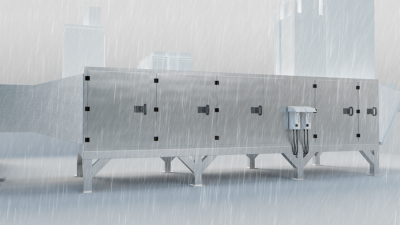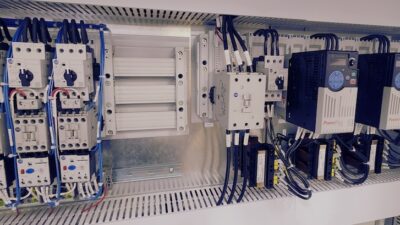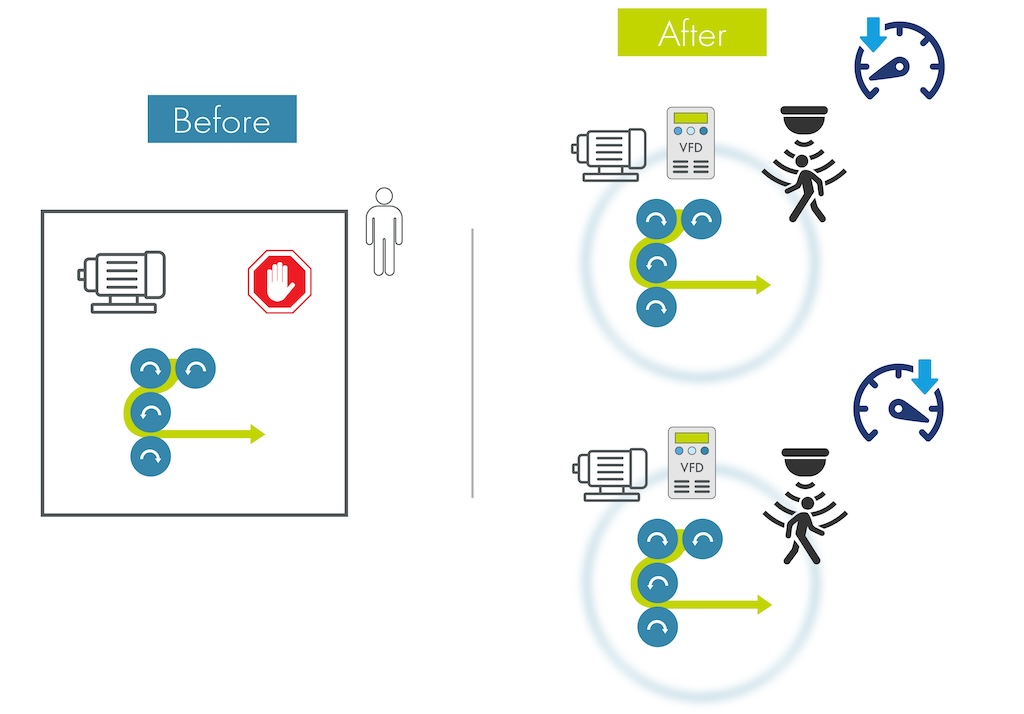When we talk about trouble with the utility power supply, it’s the big, dramatic problems that spring to mind. Blackouts and brownouts are relatively rare, but they grab the headlines. While some kind of backup power or UPS system is essential for critical installations, most of the time the electrical power supply is just taken for granted.
However, when it is there, the quality of the electrical power can vary greatly. The load profile on the utility supply is constantly changing due to a huge number of variables on the transmission and distribution system, and so the ac supply has continuous variations in voltage and phase.
The most significant problem is short instances of poor power quality, and in particular short sags in voltage. These are mostly brief, lasting somewhere between a few milliseconds up to a second, but with the voltage dropping down to as low as 50% of the nominal line voltage.
For factory equipment, voltage sags are the most frequent power disturbance, with several sags per year often experienced at the entrance of a typical site. Because of power fluctuations within the site, many more sags are experienced annually at equipment terminals.
Problems within
In fact, while some voltage sags are delivered from the grid, the majority of instances are created onsite. Any large factory or industrial site will have a substantial number of compressors, motors and similar devices, all of which are high-power loads with the capability to create problems with the voltage on the local power grid.
Many pieces of equipment will ride through these short gaps without any problems, but there can be significant detrimental effects on some types of plant and factory applications. Usually, these voltage sags don’t cause any detrimental effects to lighting (incandescent or fluorescent), motors or electric heaters; they have a fairly slow response because they store energy effectively. A motor stores mechanical inertia (kinetic energy); incandescent lights store thermal energy (thermal inertia); and fluorescent ballasts store a small amount of electrical energy (reactive inertia).
The equipment that is vulnerable tends to be electronic devices that have fast response times and don’t have enough internal energy storage to cope with severe voltage sags in the electrical supply. Examples include PLCs, adjustable speed drives and switching power supplies.
Energy storage challenges
The clue to protecting sensitive equipment against voltage sags can be found by considering why other equipment is not vulnerable. As we mentioned earlier, it’s not rocket science to see that it’s the energy storage component of lights, motors or heaters that protects them against short problems with the power supply.
So, to harden equipment, we need to look at adding energy storage. This storage component needs to be capable of delivering high power over a short period of time, and needs to have a long lifetime with minimal or zero maintenance. It also needs to be affordable.
The obvious solution in the past would have been rechargeable batteries. However, these have a number of significant problems. First, to provide the required capability of delivering very high power almost instantaneously requires a large, expensive battery. Second, rechargeable batteries have a relatively short lifespan — both in terms of elapsed time and the number of charge/discharge cycles they can be put through. It’s not uncommon for lead-acid batteries to require replacement every 2 to 3 years. Also, regular maintenance is required to keep them operating. Batteries also require conditioning in order to be able to sit at their operating voltage for years at a time. Finally, their performance suffers drastically at low temperatures, which can be a serious problem for many industrial installations.
Energy storage solution
Another component that has more recently been applied to this problem is the ultracapacitor, also known as a super capacitor. The ultracapacitor is a double-layer capacitor that has an electrode of carbon powder on aluminum. Due to the very high surface area of the electrodes and the small distance between them, ultracapacitors can achieve very high capacitances of up to 2,600 Farads for commercially-available products. This means that they have a much higher energy density than even electrolytic capacitors.
While the energy stored in an ultracapacitor is lower than that of a similar-sized battery, it can still feed dc current for around 30 seconds or longer. With typical voltage sags of less than one second, the energy storage capability is more than sufficient for these power supply problems.
Most significantly, and unlike a battery, an ultracapacitor stores energy simply by the movement of ions, without any electrochemical bonds being made or broken. So, it is able to deliver its stored energy extremely quickly, meeting the requirements of very high power. For the same reason, ultracapacitors also have a very long operating life, which has been proven to be more than 10 years and 1 million charge/discharge cycles or more.
Ultracapacitors can also remain at operating voltage for years without conditioning. As a capacitor, they have no fixed operating voltage, and so will not “fight” the power supply feeding the bus.
Over the last few years, the price of ultracapacitors has dropped considerably. They are now a cost-effective solution, with millions of units deployed.
Deployment in systems
There are a number of different ways that ultracapacitors can be deployed in a system to provide the energy storage required. Ultracapacitors are well-suited to either ac or dc installations, with an inverter used where required for systems with only ac inputs.
The ultracapacitor can be directly built into a piece equipment (such as in the dc link of industrial motor drives, or the dc supply side of a PLC) to provide an integrated solution, sometimes described as load-dedicated add-on hardening. This kind of solution is perhaps ideal, as it can provide energy storage directly at the point of use. The downside is that each critical load must have its own protection.
Alternatively, the ultracapacitor can be used to harden an entire power bus. This has the advantage of protecting all new equipment installed on the bus. However, it does mean that there must be a common power bus for multiple loads, which is not always the case. There are also limitations in terms of the area that can be protected, as the inherent inductance of the bus limits the distance over which the protection can be effective.
In summary, ultracapacitors can provide a well-proven, reliable solution to the problems of voltage sags in industrial installations, using energy storage to ride through the transients and improve the reliability of plant and equipment.
Bobby Maher is director of Boostcap technical sales at Maxwell Technologies. He heads up all sales and marketing activities and initiatives, as well as application engineering, for the Boostcap product for the North American market. He has been with Maxwell for more than eight years, beginning his career with the company in the product development division developing advanced ultracapacitors systems and modules.Before joining Maxwell, he spent seven years as project engineer for Cubic Corp., where he had direct responsibility for system-level design and coordination of hardware used in transportation sector projects. Mr. Maher has an MBA, and also holds a Bachelor of Science in Electrical Engineering from University of California, San Diego. He can be reached at 858-503-3300 or [email protected] .
www.maxwell.com



